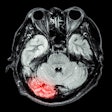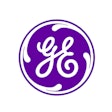
Telemedicine has matured during the past few decades, improving the delivery of healthcare to patients worldwide, overcoming challenges of geographic distance, inaccessibility, and cost. And as telemedicine has found greater acceptance, improvements to IT and related infrastructure have helped grow new telemedicine services -- among them teleultrasound.
Ultrasound itself has undergone a revolution, with the development of wireless transducers, 3D/4D imaging, and point-of-care ultrasound systems (POCUS). These advances enhance image quality, optimize clinician efficiency, and improve the overall quality of patient care.
They've also made possible the advent of teleultrasound, bringing the advanced features of ultrasound to patients in urban hospitals, rural clinics, or resource-limited settings worldwide. Miniaturization and adoption of handheld and portable ultrasound systems have opened up new niches for the imaging modality, such as in emergency and remote medicine.
Teleultrasound is showing promise for assessing fetal health in rural or underserved areas, and it is even getting a boost from smartphone technology. For example, teleultrasound via WhatsApp has enabled remote consultation on the timing of deliveries, the diagnosis of fetal heart failure, and the identification of ectopic pregnancy in Nigeria.
A truly hands-on experience
In addition to hardware advances, new developments in software are enabling clinicians to enjoy a teleultrasound experience that is truly hands-on.
For example, Dr. Michael Ruma of Perinatal Associates of New Mexico (PANM) is using Collaboration Live software from Philips Healthcare to perform teleultrasound consultations with pregnant patients. PANM is a maternal-fetal medicine specialty practice that sees a number of high-risk pregnancies. The practice uses ultrasound extensively, and it has four physician offices in larger urban cities and six satellite offices in smaller rural communities of New Mexico.
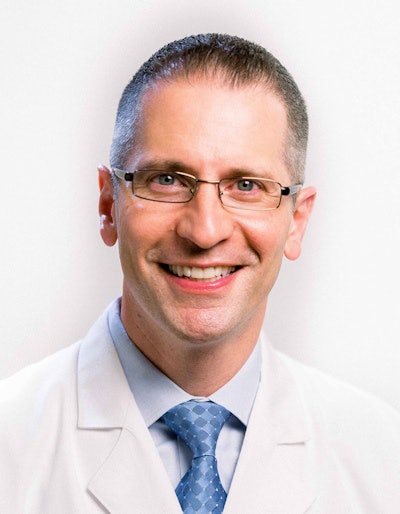 Dr. Michael Ruma.
Dr. Michael Ruma.The Collaboration Live software enables Ruma to keep in touch with activities at the remote offices it serves. The software is installed on remote ultrasound units, enabling Ruma to see the ultrasound monitor; view live video; and exchange voice, image, and text messages with a remote sonographer. Ruma may also take control of the ultrasound system to assist the sonographer or demonstrate fetal ultrasound findings for the patient.
Ruma, who has been with the practice for 13 years, says PANM has been exploring telemedicine for several years. The company first conducted a pilot project with Philips in 2020 involving 30 patients.
"A physician like myself on a computer can use Collaboration Live to make an audio-video link to the ultrasound machine," Ruma said. "I can communicate with the patient and the sonographer in real-time with both audio and video. I can also, with permission of the sonographer at the remote clinic site, take over control of a variety of capabilities of the ultrasound system."
Ruma said he is able to manipulate nearly all of the buttons and functions on the ultrasound machine remotely that he might be able to access in person. He can see and speak with the patient and also review the entire ultrasound setup.
A whole new window
Another enthusiastic user of teleultrasound is Dr. Richard Barr, professor of radiology at Northeast Ohio Medical University, Rootstown, OH, and a radiologist at Southwoods Imaging, Boardman, OH.
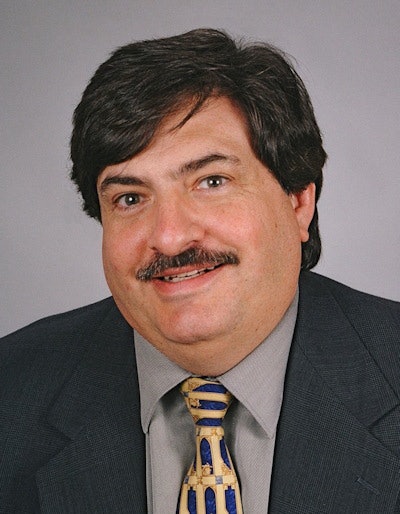 Dr. Richard Barr.
Dr. Richard Barr."Collaboration Live is a whole new window on how we can perform ultrasound exams," Barr told AuntMinnie.com. "We have the capability of putting a camera on the system. So not only am I able to see the images in real-time, I can also see how they position the patient, and how they're moving the transducer. We talk in real-time either verbally or using text messages. I can communicate no matter where the tech is."
Barr, who lectures and does ultrasound training and education worldwide, indicates the software would be extremely helpful when teaching an ultrasound-contrast course where trainees might feel uncomfortable mixing the contrast on their own without guidance. It also can be used to do live demonstrations at meetings where participants could ask questions and receive answers in real-time.
Significant distances
Meanwhile, PANM has installed the software on all of its 25 ultrasound scanners, with images stored separately on a PACS. The software has come in handy at the practice's office in remote, mountainous Ruidoso, NM, which is a four-hour drive south from where Ruma practices regularly. The availability of subspecialty medical care is limited in this area.
Ruma is able to initiate a telemedicine visit, obtain a medical history from patients, and discuss their ultrasound exam and fetal imaging findings. He estimates that the practice's physician billings in its Ruidoso office have increased 20% to 30% since it adopted teleultrasound there. For his entire perinatal practice, teleultrasound reimbursement is about 98% of what it would be for an in-person visit.
 Dr. Michael Ruma communicates with a sonographer performing a fetal ultrasound exam at a remote location. Image courtesy of Dr. Michael Ruma.
Dr. Michael Ruma communicates with a sonographer performing a fetal ultrasound exam at a remote location. Image courtesy of Dr. Michael Ruma.Ruma believes the need for telemedicine, and specifically teleultrasound, has existed for a long time.
"We have a limited number of physicians and subspecialty physicians. There's clearly a healthcare worker shortage in the United States and around the world, particularly in rural communities, but even in large urban centers," Ruma said. "The need for quick access to a subspecialist or any type of health care provider can be dramatically augmented by telemedicine and teleultrasound. Teleultrasound capabilities expand the role of a radiologist, obstetrician, and maternal-fetal medicine specialist to provide care to a greater network."
Learning curve
Among the challenges involving teleultrasound is having the proper equipment that fits the needs of the practice, notes Ruma. There will be a learning curve, as there is for any new technology platform. The usual security requirements, involving HIPAA and secure IT infrastructure, must be adhered to. As with telemedicine in general, physicians would have to be licensed and credentialed in the states that their patients reside.
Ruma believes those practices considering implementing teleultrasound should analyze their needs and budget.
"It is definitely a new frontier. Telemedicine and teleultrasound have helped our practice provide greater confidence to patients, while giving them greater access to subspecialists," he said. "It's helped our practice increase patient visits and revenue because we are now able to quickly do patient consultation at the time of the remote ultrasound visit, which is a separate billable item in conjunction to the ultrasound billable."
In Canada, meanwhile, officials taking a different tack to teleultrasound, putting POCUS scanners aboard emergency helicopters to help medical personnel triage trauma cases for patients in rural areas that are distant from tertiary care hospitals.
Recently, teleguidance has been added to the systems: Personnel are able to transmit images in real-time using the cameras on their smartphones affixed to the backs of probes that are used on patients.
"The systems have been operational for about a year," explains Dr. Tom Jelic, assistant professor of emergency medicine at the University of Manitoba in Winnipeg. "A dozen flight crews have been trained."
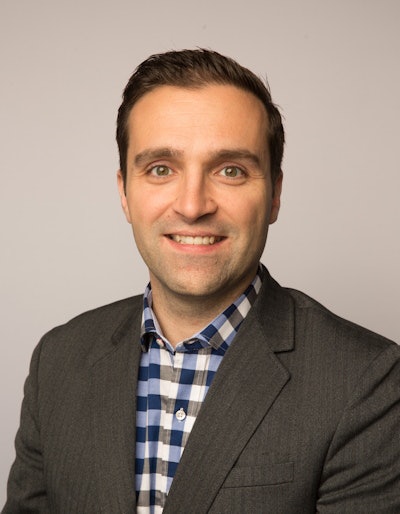 Dr. Tom Jelic.
Dr. Tom Jelic.Officials would like to expand similar teleultrasound access across western Canada. One project under consideration, according to Jelic, would use teleguidance and teleultrasound to serve patients in extremely remote areas of Canada, who would otherwise have to fly six to eight hours to reach a clinic. Teleultrasound would help nurses triage patients and enable medical issues, such as cardiac issues, to be addressed in real-time by specialists, such as cardiologists, he indicated.
"POCUS and teleultrasound help clinical providers obtain real-time assessments of medical conditions. They're not a comprehensive exam, but focus on specific areas of concern and offer critical findings," Jelic adds.
Training challenges
Spearheading efforts to extend the reach of ultrasound and improve healthcare for many, the PURE initiative (Point-of-care Ultrasound in Resource-limited Environments) is offering teleultrasound mentorship programs and training in Africa. But while there is a significant amount of interest in POCUS and teleultrasound, issues involved in ultrasound training present challenges.
"One of the biggest challenges is a supply and demand issue. We don't have enough faculty well versed in POCUS to be able to train everyone who wants to learn," said Dr. Rachel Liu, director of point-of-care ultrasound education and director of the advanced training period for Yale School of Medicine.
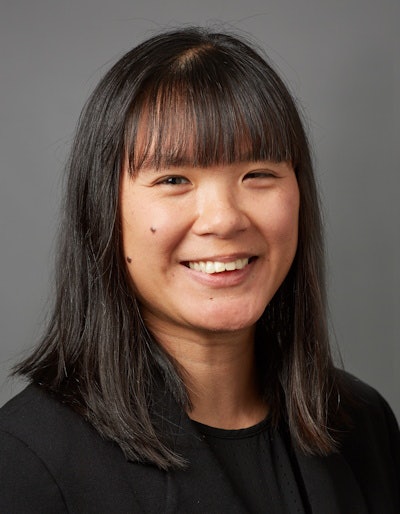 Dr. Rachel Liu.
Dr. Rachel Liu.Liu is responsible for overseeing ultrasound training in Yale's emergency department, whose overall volume is about 120,000 patients and 12,000 ultrasound exams performed annually. In addition, there is a need to train specialists who are outside of ultrasound but who use the modality in their specialty, such as internal medicine.
In an interview, Liu, who also is fellowship director of emergency ultrasound at Yale, says that Yale residents in emergency medicine are required to receive a minimum of four weeks of dedicated ultrasound training and hands-on practice as a residency requirement. And this does not include physicians who already have graduated but who need initial or additional ultrasound training, which must be attained through continuing education and workshops.
"But part of the challenge with training is that you need someone to provide quality assurance, education, and feedback on how the training is going," Liu said. "So in addition to setting up the training, you also have to set up the supervisory aspect of training. Not only do we need more teachers and faculty who can teach clinical ultrasound, we need more people who can act in administrative and supervisory functions."
Barr also believes there is a significant need for training in teleultrasound.
"Many people think you simply push a button, and it works. But that's not so," he said. "There's a lack of education about some ultrasound features that are not appropriate all the time. Knowing which features are appropriate for which organs or which situations has been a big problem with point of care."
The field of ultrasound is evolving quickly with the introduction of new technology, and that technology must be taught, even to people that have been doing ultrasound for many years. They'll need to be retrained and learn new techniques, Barr added.
Fortunately, teleultrasound has an educational component as well, as described in a letter published in July 2020 in POCUS Journal by Liu and colleagues. They discuss how teleultrasound is being used by experienced faculty to provide hands-on instruction to students and trainees. This includes proper scanning technique and the demonstration of pathologic findings.
"POCUS teleguidance technologies may also aid frontline clinicians in remotely managing critical COVID-19 patients or discharged patients who are self-monitoring at home," Liu and colleagues wrote.
The COVID-19 pandemic has also helped speed POCUS acceptance by hospital leaders, they wrote. And multiple specialties have authored POCUS-related policies and guidelines for diagnosing and managing COVID-19 disease.
"For example, the American Society of Echocardiography stated that clinicians caring for COVID-19 positive patients and those under investigation should perform cardiac POCUS as a first-line imaging tool for cardiovascular findings," Liu et al wrote. "Doing so potentially replaces or delays the need for comprehensive transthoracic echocardiography or other imaging."
Liu added that POCUS is helping physicians choose the correct treatment pathways for extreme critical illnesses.
"It enables us to quickly determine what diagnoses to rule in or rule out, and proceed along the right pathway, offering a more rapid turnaround than other modalities," she said.
What's next for teleultrasound?
Barr is looking forward to novel ultrasound features that will be available on clinical units, such as quantitative ultrasound.
"We're going to be able to quantify the amount of fat in the liver for patients who have nonalcoholic fatty liver disease," he said. "We'll also be able to do more pathology and give that information to physicians, who will triage patients better."
Like teleultrasound itself, such advances will go a long way toward delivering better patient care.













